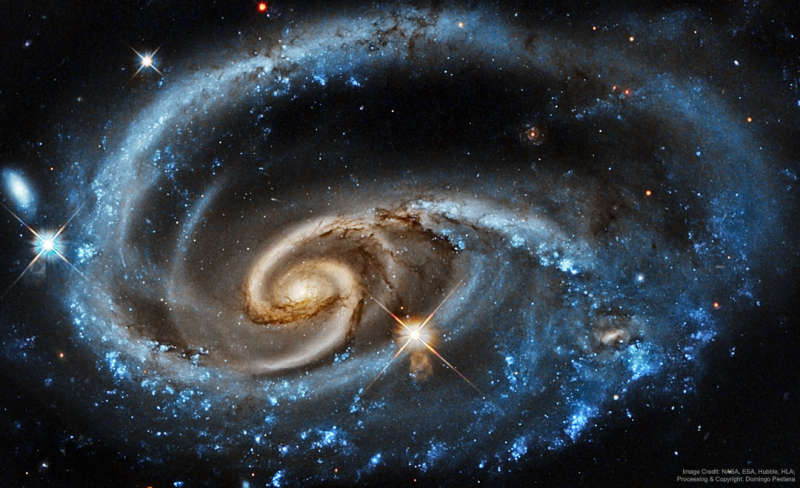Credit & Copyright: Domingo Pestana
Explanation:
What's happening to this spiral galaxy?
Although details remain uncertain,
it surely has to do with an ongoing battle with its smaller galactic neighbor.
The
featured galaxy
is labelled UGC 1810 by itself, but together with its
collisional partner is known as
Arp 273.
The overall shape of UGC 1810 -- in particular its
blue outer ring --
is likely a result of wild and
violent
gravitational
interactions.
This ring's blue color is caused by massive stars that are
blue hot
and have formed only in the past few million years.
The inner galaxy appears older, redder, and threaded
with cool
filamentary dust.
A few bright
stars appear well in the foreground, unrelated to
UGC 1810, while several galaxies are visible well in the background.
Arp 273 lies about 300 million light years away
toward
the constellation of Andromeda.
Quite likely, UGC 1810 will
devour its
galactic sidekick over the next billion years and settle into a classic
spiral form.
APOD in world languages:
Arabic,
Catalan,
Chinese (Beijing),
Chinese (Taiwan),
Croatian,
Czech,
Dutch,
Farsi,
French,
German,
Hebrew,
Indonesian,
Japanese,
Korean,
Montenegrin,
Polish,
Russian,
Serbian,
Slovenian,
Spanish,
Turkish,
Turkish,
and
Ukrainian
1999 2000 2001 2002 2003 2004 2005 2006 2007 2008 2009 2010 2011 2012 2013 2014 2015 2016 2017 2018 2019 2020 2021 2022 2023 2024 2025 |
Yanvar' Fevral' Mart Aprel' Mai Iyun' Iyul' Avgust Sentyabr' Oktyabr' Noyabr' Dekabr' |
NASA Web Site Statements, Warnings, and Disclaimers
NASA Official: Jay Norris. Specific rights apply.
A service of: LHEA at NASA / GSFC
& Michigan Tech. U.
|
Publikacii s klyuchevymi slovami:
interacting galaxies - vzaimodeistvuyushie galaktiki
Publikacii so slovami: interacting galaxies - vzaimodeistvuyushie galaktiki | |
Sm. takzhe:
Vse publikacii na tu zhe temu >> | |
